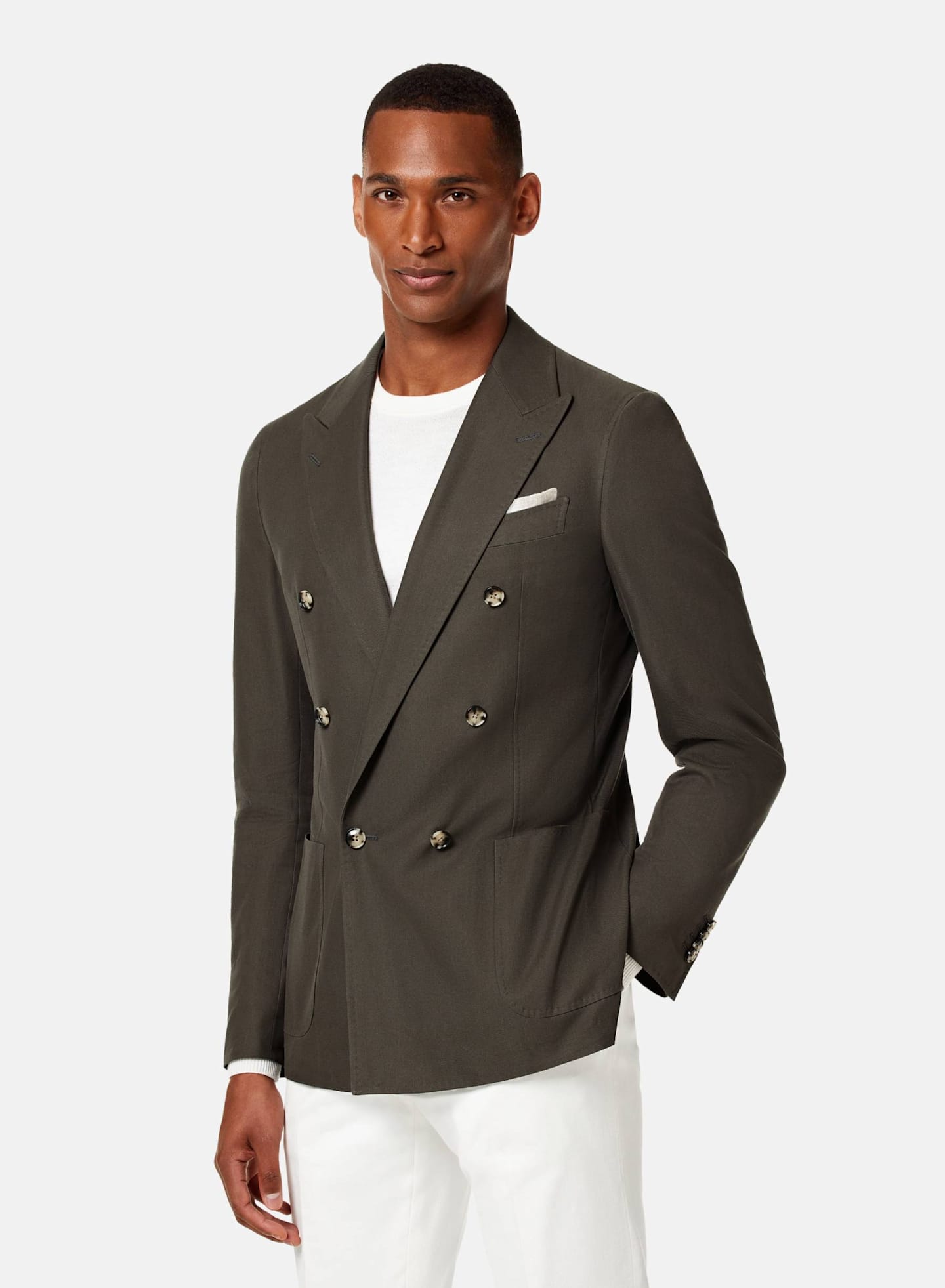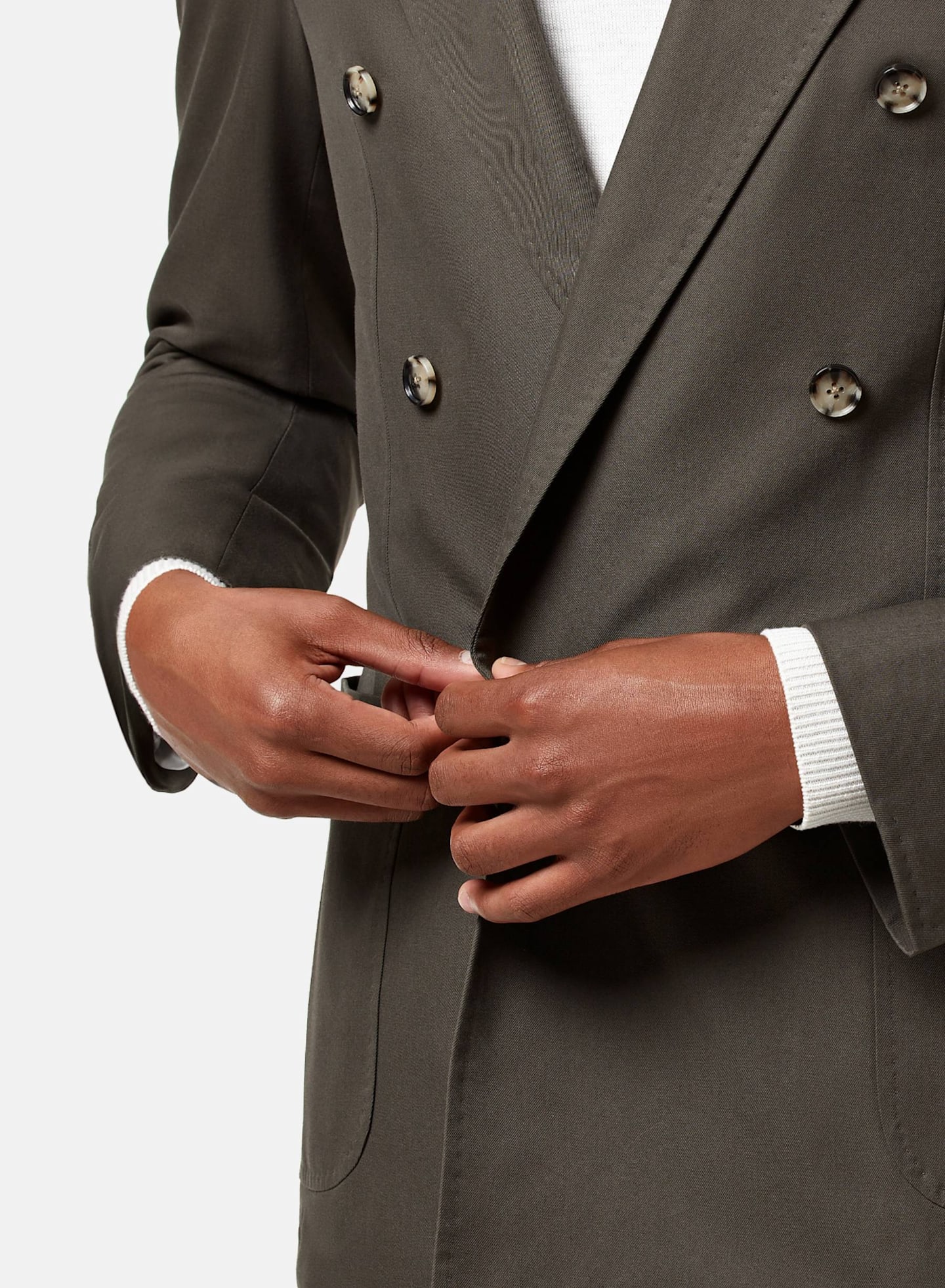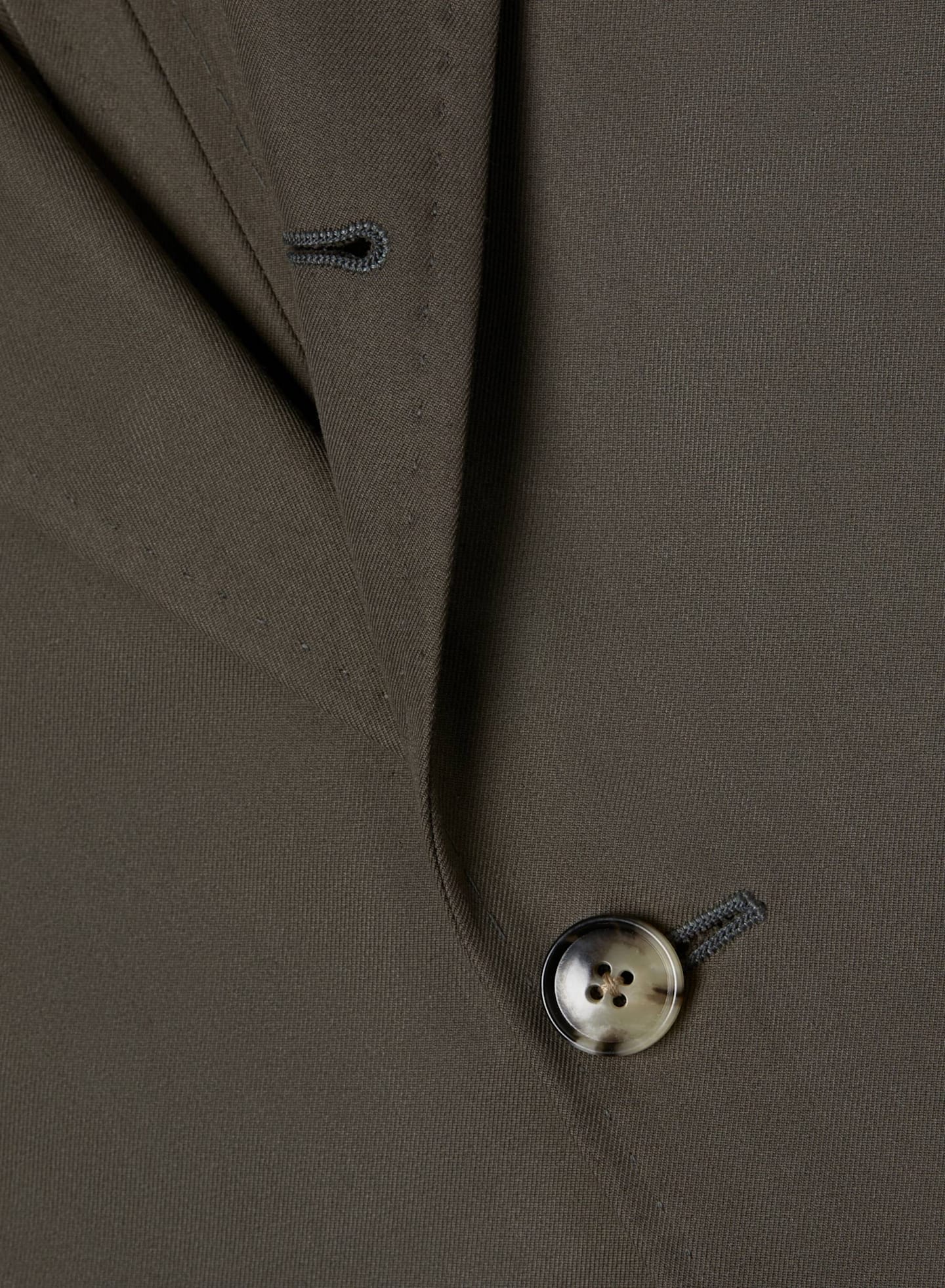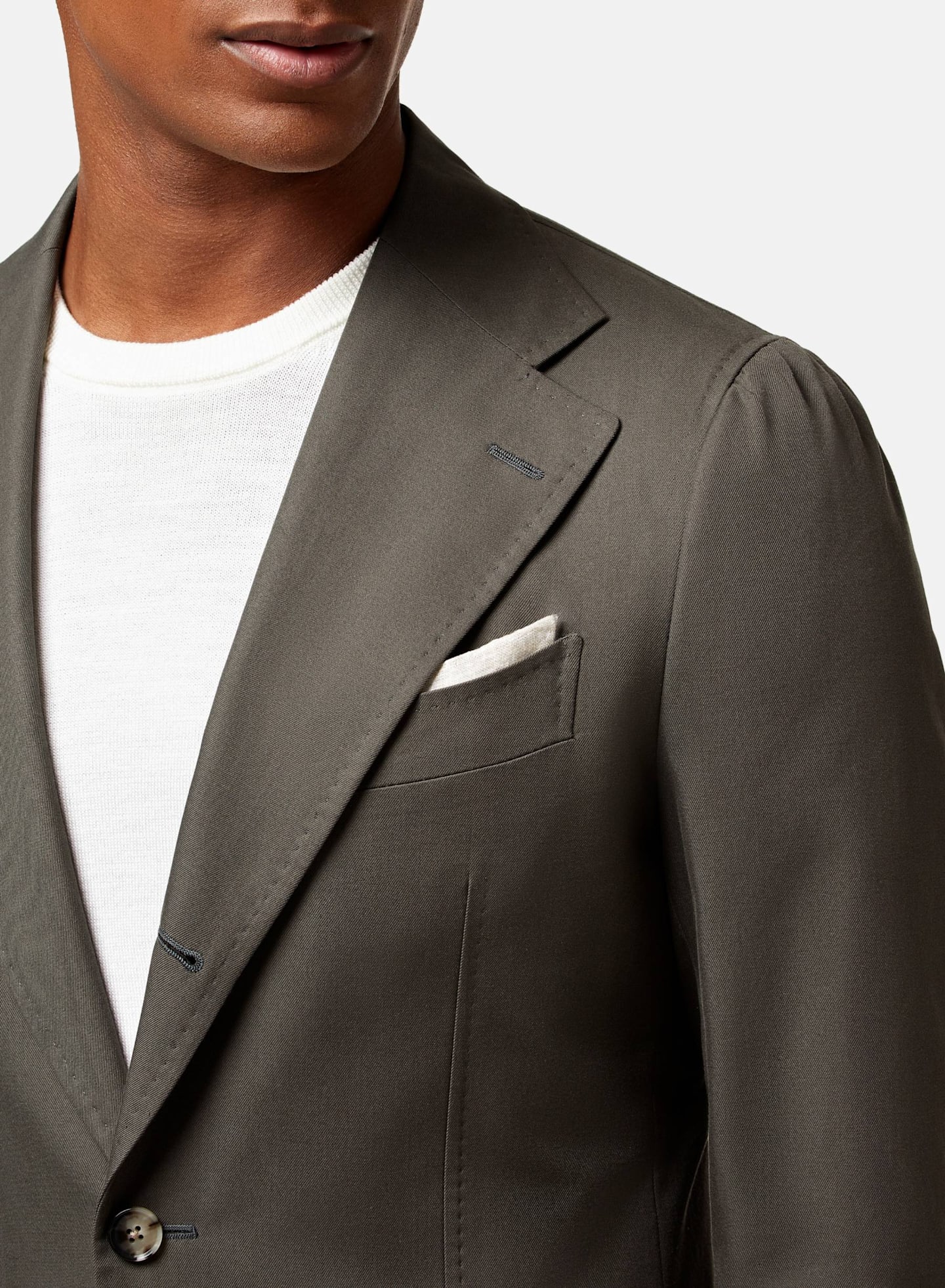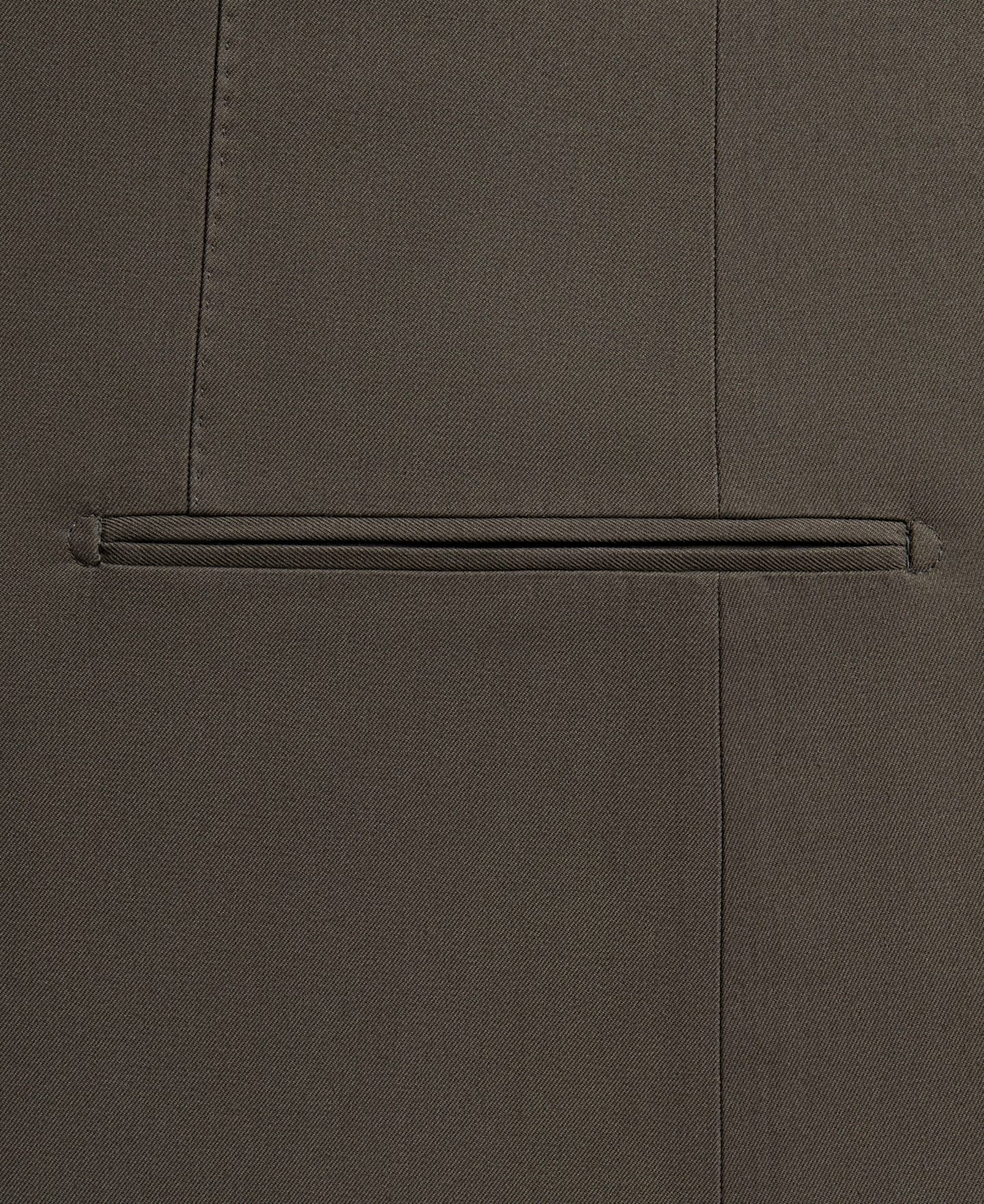Style Guide
What to Look For: Your Jacket Detail Guide
What to Look For: Your Jacket Detail Guide
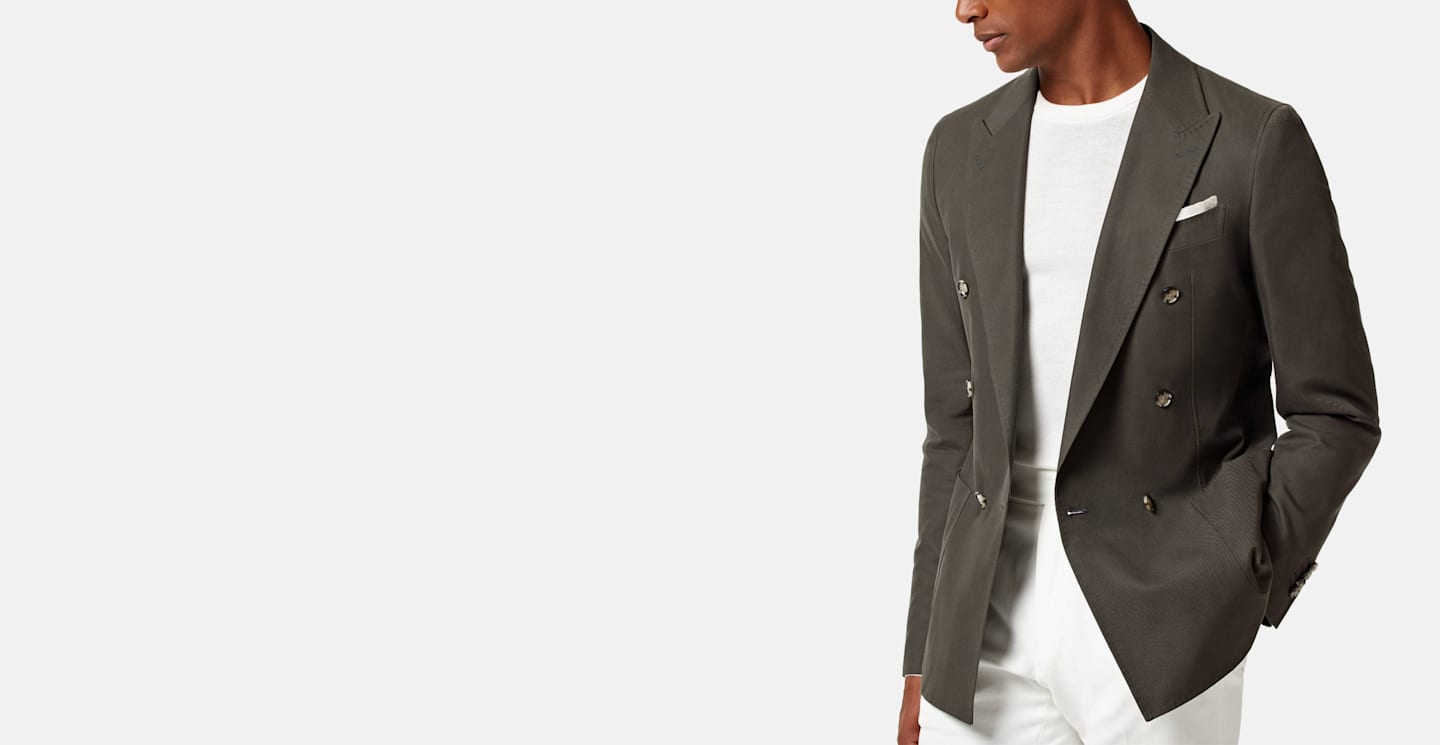
Lapels, closures, lining—it’s hard to know where to begin when searching for the perfect jacket. Fear not, we’re diving into the details that make Suitsupply jackets stand out so you can choose the ideal style for you.
Find your Lapel


The Peak Lapel — A generally formal style found mainly on double-breasted fits, peak lapels feature upward pointing tips, and are considered one of the hardest details in tailoring.
Those two prominent flaps of folded fabric along the opening on your jacket are called the lapel, and depending on their size and style, could make all the difference between timeless elegance and a modern appeal. Go bold with wide peak lapel, whose sharp angles and widened flap gives the impression of a strong, masculine shoulder—perfect for those of small stature looking to give themselves a more defined silhouette. Or keep it classic with a notch lapel, a classic style that complements your physique and is versatile enough for casual and formal occasions.

Notch Lapel — A classic 9.2cm width with wide appeal, perfect for all shapes and sizes, and the best pick for those of slimmer stature.

Wide Notch — The 9.8cm expanded width of a wide notch lapel helps grant the illusion of a broader chest.
The Right Pocket for You


Patch Pocket — Considered to be a more casual option, they’re found in variations that can include a flap closure and even pleats.
Jetted, flap, patch, flapped patch—not all pockets are created equal. Some are made for funtionality, others are better suiting to formal looks while others still are simply meant to be decorative accents—whatever your preference, it always helps to know the options.

Ticket Pocket — As the name suggests, this pocket was once used for easy access to train and opera tickets. Today, it’s a style accent and sign of consideration to detail.

Flap Pocket — A jetted pockets that features a flap of fabric stitched to the upper welt.
Shoulders: Structured or Natural?
When it comes to setting the overall tone of your suit, the structure of the shoulder makes one of the biggest impacts. A traditional Italian style that leans toward a more sartorial aesthetic, a soft, unstructured shoulder features little to no padding, highlighting the wearer’s natural shoulder shape and grating a sportier, more casual appeal. A structured shoulder, by contrast, features more padding to create a broader, formal look with a defined form. When considering which style is best for you, remember that a structured shoulder will accentuate your physique, while unstructured will be truer to your shape.
Lined or Unlined?


Unlined — Free of thick layers to give you a more casual aesthetic and a smoother, more natural and relaxed range of motion.
Just as the name suggests, our fully lined jackets feature lining running from the neckline down to the hemline, throughout the entirety of the jacket—this includes the full back, chest pieces and armholes. Ideal for the cooler seasons as they provide more warmth, full lining also grants a rich drape and more robust structure, as well as allows for personalization with Custom Made suiting. Unlined suits feature lining only in the sleeves to make slipping on your jacket a smooth process. Lighter and providing more natural movement throughout the jacket, they’re a contemporary style with casual appeal.

Butterfly Lining — This complex style makes for a lighter, more natural wear, but requires expert tailoring to create a clean, symmetrical finish as there’s no lining to hide the interior stitching.
Keeping it Together: Stitching


2mm Pick Stitch — Pick stitching not only strengthens the edges of the hems, lapels and pockets of a jacket, but also prevents curling and offers a neat, uniform finish.
AMF stitching, also known as pick stitching, is stitching that follows the edges of the jacket hem, lapel and pockets at either 2mm, which gives the jacket a more versatile, sportier appeal, or 6mm, which tends to provide a more sartorial aesthetic. Named after the company that produces the machine that makes this stitch, American Machine and Foundry, AMF stitching is a highly precise, yet incredibly slow process, but good things come to those who wait—like neat, flat edges that wont curl.

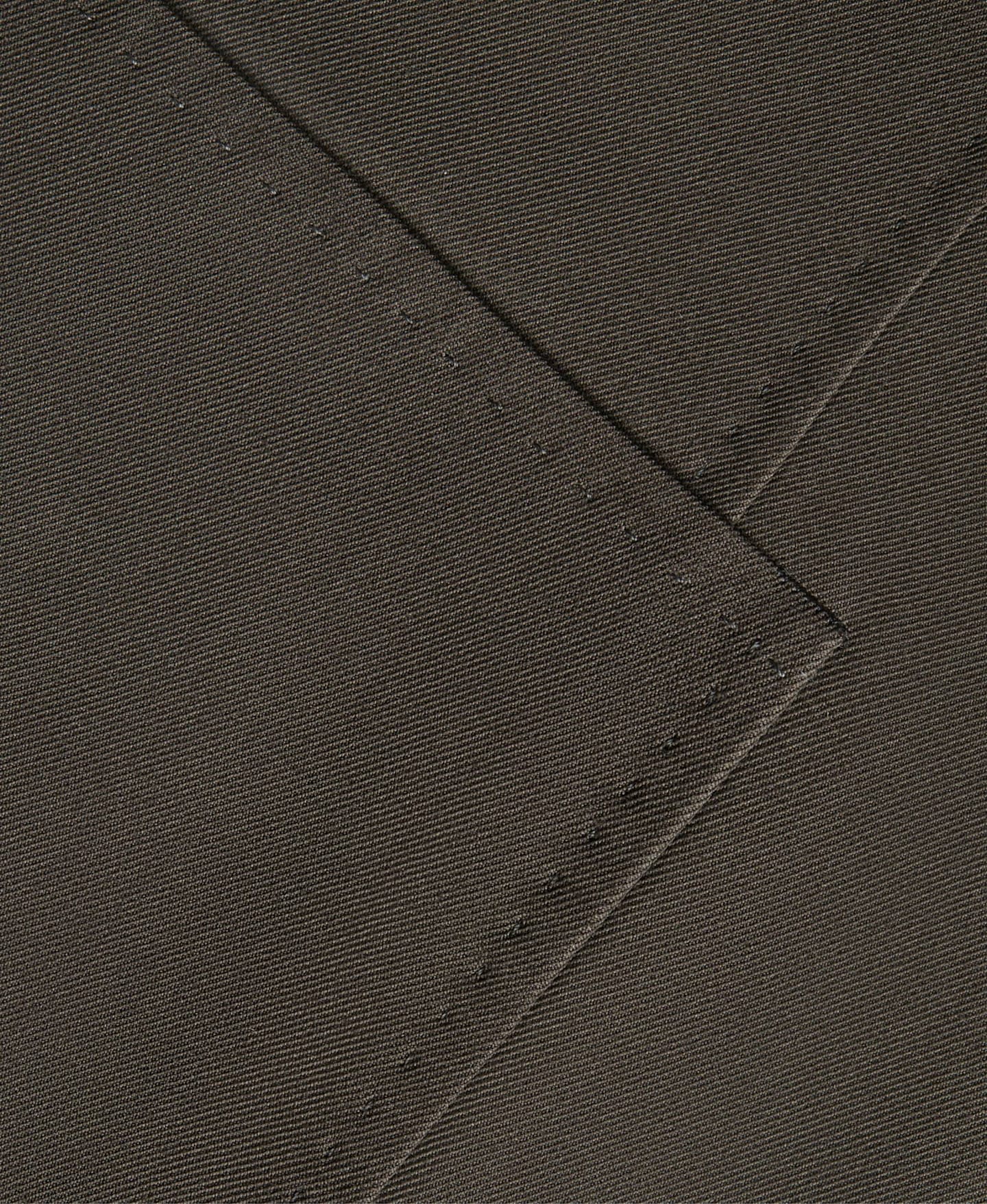
6mm Stitching — Pick stitching at 6mm from the edge adds reinforcement and provides a sartorial appeal.


